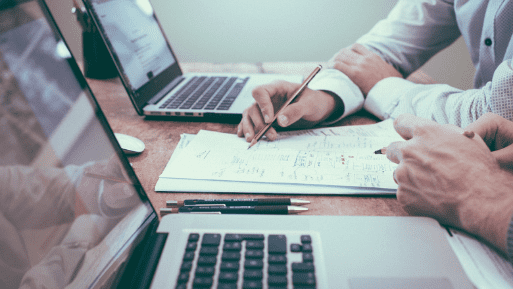The alarming number of cyberattacks in the past year has prompted the US government to issue an executive order on cybersecurity for federal agencies and private companies. Agencies must adopt multi-factor authentication and encryption for their data, while private companies must immediately report cases of cyberattacks. Moreover, to be compliant, organizations must perform regular cybersecurity audits.
A cybersecurity audit assesses whether or not organizations have the proper cybersecurity policies and procedures in place, ensuring that they are following all relevant regulations. There are many ways to perform a cybersecurity audit; for example, using a sampling technique during your compliance audit process can help you conclude high-volume datasets.
Of course, you can also use technology to make audit and compliance more manageable. The Internet of Things (IoT) utilizes sensors, GPS, and tags with 5G and artificial intelligence (AI), which means the IoT can be a great solution for visibility and security. Although many stories about IoT and compliance are about regulating the IoT itself, this technology can help small businesses demonstrate compliance and reduce cybersecurity costs. Elaborating it in detail, here is how the technology can benefit business in Compliance:
1.Easier Asset Tracking
Asset tracking is essential for audit and compliance, as it captures vital information on the status and location of company assets — including laptops, USB sticks, and external hard drives. GPS software can keep track of IoT-enabled devices in a secure, scalable way. On the other hand, connected devices would also need secure hardware, including a rigid-flex circuit which is an ideal solution for contemporary small-form electronics such as wearables, mobile wireless products, and other connected devices.
This type of circuit is highly durable and lightweight, making them ideal for integrating into IoT-based intelligent systems. The device can leave an audit trail to help management check on when, where, and how something was accessed, so an alarm can be raised with sufficient evidence.
2.Better Monitoring Strategy
There are several cybersecurity weaknesses that an organization may have that may include : unpatched software, authentication password problems, and remote access control issues, to name a few. One of the most damaging is social engineering, where malicious actors target humans in an organization to get what they want. However, cybersecurity workshops and training do not really talk much about this obvious threat.
IoT— geolocation tracking, special sensors, and visual measurement tools — can mitigate cybersecurity risks and increase overall efforts of compliance. Sensors in work areas can alert management if an important computer is left unattended for long periods of time. AI-based camera systems can identify unauthorized people in places where sensitive data is kept. This way, the IoT helps pinpoint weaknesses during an audit and improve policies moving forward.
3.Smoother Auditing Process
One of the changes brought about by the COVID-19 pandemic is the rise of remote working. An increase in these distributed systems not only makes cybersecurity vulnerable but also makes the auditing process inefficient. You may need to go back and forth to check on how policies are being complied with within various departments.
An IoT, cloud-based system can enhance your processes and leverage machine-to-machine communications. Instead of manually ticking off your audit checklist, incorporating IoT with AI technology can generate the data you need for documentation. IoT sensors and wearables can automatically log real-time data for you while identifying patterns and flagging problems as well.
Conclusion
At the end of the day, it is important to perform a compliance audit to the best of your capabilities as an organization. Compliance audits verify your current security position and compare it against industry standards, increasing stakeholder trust and confidence. When committing to a cybersecurity audit, it is best to keep the following goals in mind:
- The information generated should be used for relevant decision-makers.
- The information should be accurate and fairly presented.
- The information should provide evidence for a conclusive opinion and recommendations.
- The information should pinpoint any errors or fraud which may occur.
AUTHOR BIO: Jill Herring is interested in cybersecurity and compliance. She monitors the latest security and risk management trends, conveying her insights and tips through her articles. When she’s not studying the latest in IT regulation, you can find her taking care of her plants at home.

